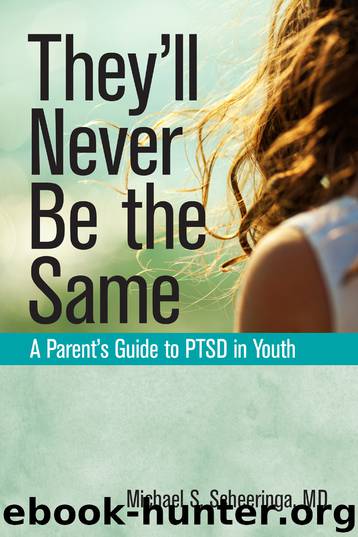They'll Never Be the Same by Michael S. Scheeringa MD

Author:Michael S. Scheeringa, MD
Language: eng
Format: epub
ISBN: 9781942094623
Publisher: Central Recovery Press, LLC
Published: 2018-03-13T04:00:00+00:00
The “Imply-Suggest-and-Hint” Problem
I say, however, that we were only somewhat careful. We knew those seventeen studies could not prove a causal association with parenting because they were cross-sectional designs and they did not assess actual parenting behaviors, but we did not put a lot of effort into persuading the readers of this. While we did include one single, clear sentence stating that the correlation “is not sufficient to proclaim a causal association between parent and child,” we included only that one lonely sentence. In contrast, more sentences were devoted to implying, suggesting, and hinting that there probably was a causal association with parenting. This is an important point worth emphasizing for parents who try to sift through the scientific literature on their own. Scientific articles can be truthful in the technical presentation of facts but can be extremely biased at the same time in how those facts are discussed.
A typical mental health research article is about 5,000 words. Of those 5,000 words, about 1,500 have to be allocated to cut-and-dried descriptions of the research methods and the results, and the other 3,500 can be allocated to background information and discussion of the results wherein the authors have discretion to convey their personal biases. Within those 3,500 words, authors can write balanced arguments that describe the pros and cons of both sides of the argument. Instead, what happens probably 99 percent of the time is that authors use that space to repeatedly imply, suggest, and hint that one attention-getting interpretation of the facts is the one they want us to believe.
Here is an example. A group of investigators at Kent State University published a review article in 2012 that was very similar to the review article I published in 2001. That is, they summarized the published studies that had examined the relationship between children’s PTSD symptoms and parental PTSD or depression symptoms.17 The Kent State group conducted a more rigorous test than I did; they conducted a statistical meta-analysis. They also had more studies to review because they conducted their review eleven years after mine. From their examination of thirty-five studies, they found, as expected, a strong correlation between parents’ post-traumatic symptoms and children’s post-traumatic symptoms.
On the one hand, the Kent State article is an excellent example of careful and systematic techniques to analyze data. In the first paragraph of the discussion section, they adopted a fairly balanced interpretation with only a trace of bias toward blaming parents:
Several mechanisms may explain the association between parent post-traumatic distress and child PTSS including the following: a shared genetic diathesis . . . modeling and reinforcement of anxious or avoidant behaviors by parents . . . and decreased positive parent-child interactions.18
That sentence, sadly, was the last mention of any possible genetic explanation. The authors used many more sentences to imply, suggest, and hint that parents caused their children’s PTSD symptoms. In the final paragraph of the paper, for example, which is where many readers often skip to to get the gist of the article,
Download
This site does not store any files on its server. We only index and link to content provided by other sites. Please contact the content providers to delete copyright contents if any and email us, we'll remove relevant links or contents immediately.
Rewire Your Anxious Brain by Catherine M. Pittman(18496)
Talking to Strangers by Malcolm Gladwell(13144)
The Art of Thinking Clearly by Rolf Dobelli(10150)
Mindhunter: Inside the FBI's Elite Serial Crime Unit by John E. Douglas & Mark Olshaker(9113)
Becoming Supernatural by Dr. Joe Dispenza(8047)
Change Your Questions, Change Your Life by Marilee Adams(7575)
The Road Less Traveled by M. Scott Peck(7481)
Nudge - Improving Decisions about Health, Wealth, and Happiness by Thaler Sunstein(7472)
The Lost Art of Listening by Michael P. Nichols(7365)
Mastermind: How to Think Like Sherlock Holmes by Maria Konnikova(7175)
Enlightenment Now: The Case for Reason, Science, Humanism, and Progress by Steven Pinker(7093)
Win Bigly by Scott Adams(7041)
The Way of Zen by Alan W. Watts(6460)
Daring Greatly by Brene Brown(6377)
Big Magic: Creative Living Beyond Fear by Elizabeth Gilbert(5562)
Grit by Angela Duckworth(5456)
Ego Is the Enemy by Ryan Holiday(5236)
Men In Love by Nancy Friday(5122)
Altered Sensations by David Pantalony(5013)
